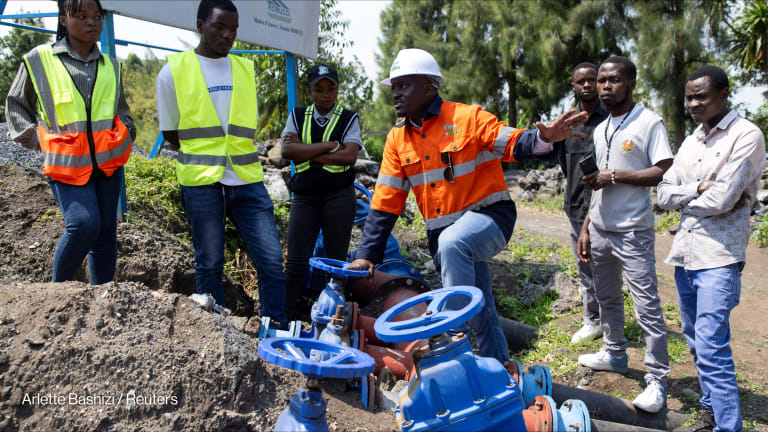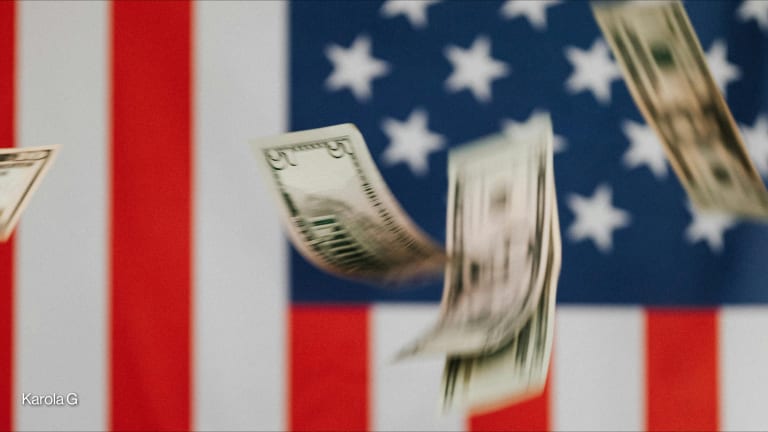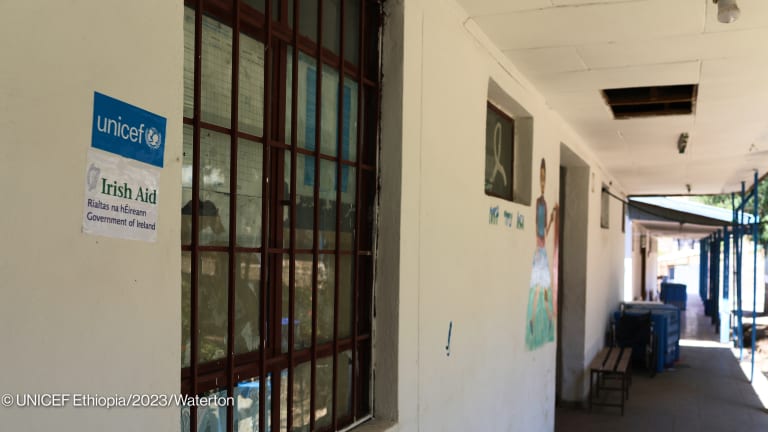USAID funding explained: What’s at risk under Trump?
The agency spent more than $30 billion in the last fiscal year and was expected to obligate billions more this current quarter — but that won't be happening with the aid freeze in place for the rest of the quarter.
Last month, Donald Trump’s administration issued a stop-work order to the U.S. Agency for International Development, which effectively means that the agency will halt most spending for the next three months. But what does that mean? How much aid funding is at risk? A Devex analysis identified that during that time, billions of dollars in new funding would normally be allocated. We’ve looked at last year’s funding landscape to identify where the missing billions would have gone. What’s the top-line number? USAID regularly reports its figures to USASpending which show how much it spent in the fiscal year that ended in September 2024. That data shows it channels most of its money via two channels — assistance, which chiefly covers grants and cooperative agreements, and acquisition, which is mainly contracts. Collectively, these are known as A&A. In FY 2024, USAID obligated $30.3 billion. The year before that, it obligated $37.8 billion. The agency is currently in the second quarter, or Q2, of its 2025 financial year, which began on Jan. 1, 2025. In the equivalent period last year, it obligated $3.9 billion. A similar amount would have been expected to be obligated during the period covered by the stop-work order, which will run until April 19, 2025, making it largely concurrent with Q2. In a previous analysis, we estimated A&A to be around 85% of USAID’s annual federal action obligation, with the rest allocated through government-to-government agreements. How was the money spent geographically? Not counting direct payments, USAID assistance funding in 2024 was worth $18.5 billion. Three high-income countries accounted for nearly 90% of this: the United States, Switzerland, and France. U.S.-based grantees accounted for 68.7% of the total, receiving $12.7 billion — in cash terms, signifying no change from 2023. Awardees from Switzerland doubled their total obligation in 2024, amounting to $3.2 billion, while their counterparts from France received $237.8 million, up 36.8% in cash terms from 2023. Among low- and middle-income countries, South Africa got the largest sum, worth $204.3 million. Grantees from Kenya ranked next, with $194.3 million; Zimbabwe, with $133.6 million; Uganda, with $127.3 million; and Nigeria, with $99.7 million. U.S.-based contractors also received most of USAID’s acquisition funding, worth $7.2 billion — 96% of the total. In cash terms, this is 12% more than they got in 2023. Awardees from Uganda ranked next, with $85.9 million; then contractors from Tanzania, with $53.2 million; Zambia, with $33.4 million; Mozambique, with $29 million; and Rwanda, with $14.9 million. What were the sectoral priorities? USASpending data does not provide data on sectoral targets of each award, but a separate portal maps out USAID’s focus areas. This portal encompasses all spending, not just A&A-funded activities. The portal also records disbursement, unlike USASpending, which records obligations. Based on the portal, USAID’s spending by sector amounted to $44.7 billion in 2023. The largest share went to government and civil society, with $16.1 billion. Emergency response ranked next, with $10.5 billion; HIV/AIDS, with $3.3 billion; basic health, with $2.8 billion; maternal and child health and family planning, with $1.37 billion; and agriculture, with $1.36 billion. How was the money given out? USAID awards assistance through several instruments. The largest portion — around 40% of assistance and worth $9.1 billion — is awarded through cooperative agreements. Project grants come next, at $7.8 billion, followed by direct payments at $4.3 billion. USAID primarily channels direct payments to multilaterals, although some international nonprofits can also receive them. In 2022 and 2023, the biggest portion of direct payments were made to the International Bank for Reconstruction and Development for assistance to Ukraine. IBRD was also the biggest recipient of direct payments in 2024, with $4 billion. On the other hand, USAID’s obligation through acquisition went up by 11.6% in cash terms — from $6.7 billion to $7.5 billion. Try out Devex Pro Funding today with a free five-day trial, and explore funding opportunities from over 850 sources in addition to our analysis and news content.
Last month, Donald Trump’s administration issued a stop-work order to the U.S. Agency for International Development, which effectively means that the agency will halt most spending for the next three months. But what does that mean? How much aid funding is at risk?
A Devex analysis identified that during that time, billions of dollars in new funding would normally be allocated. We’ve looked at last year’s funding landscape to identify where the missing billions would have gone.
USAID regularly reports its figures to USASpending which show how much it spent in the fiscal year that ended in September 2024. That data shows it channels most of its money via two channels — assistance, which chiefly covers grants and cooperative agreements, and acquisition, which is mainly contracts. Collectively, these are known as A&A.
This story is forDevex Promembers
Unlock this story now with a 15-day free trial of Devex Pro.
With a Devex Pro subscription you'll get access to deeper analysis and exclusive insights from our reporters and analysts.
Start my free trialRequest a group subscription Printing articles to share with others is a breach of our terms and conditions and copyright policy. Please use the sharing options on the left side of the article. Devex Pro members may share up to 10 articles per month using the Pro share tool ( ).
Miguel Tamonan is a Senior Development Analyst at Devex, where he analyzes data from public and private donors to produce content and special reports for Pro and Pro Funding readers. He has a bachelor’s degree in Political Science with a Major in International Relations from the Polytechnic University of the Philippines.








